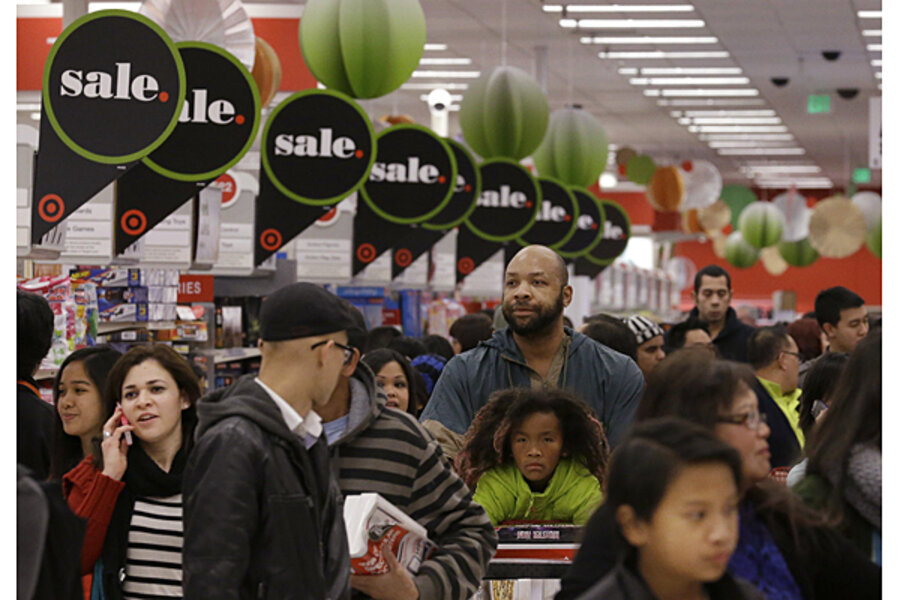Black Friday weekend sales disappoint. Can retailers recover?
Loading...
Americans had to slog nearly to the very end of November to get to Thanksgiving (Nov. 28) this year. That means only 27 days between Turkey Day and Christmas Day, Dec. 25.In fact, it's the shortest interval between Thanksgiving and Christmas on record.
That's happy tidings for Christmas lovers, but it's potentially gloomy for US retailers, which have already had a rocky year: Compared with 2012, when Thanksgiving came early, there are six fewer days to lure shoppers into stores. And the early holiday shopping results don't bode well. Spending during the 2013 Black Friday weekend declined from the previous year for the first time since 2009. Purchases made in stores and online between Thursday, Nov. 28 and Sunday, Dec. 1 fell 2.9 percent from 2012 to $57.4 billion, according to a survey from the National Retail Federation.
Many forecasters already expected holiday spending growth to be anemic compared with last year. A recent Morgan Stanley study predicts holiday same-store sales will increase 1.6 percent in 2013, down from a 3.5 percent increase in 2012. FTI Consulting, on the other hand, predicts a 4.9 percent sales increase. The consumer research firm ShopperTrak says that overall US retail sales will rise 3 percent in November and December, a drop from 4.1 percent in 2012.
Among the reasons for predicting lackluster holiday sales: Back-to-school sales were a disappointment, and major stores, including retail bellwether Wal-Mart, have seen their profit margins shrink. But historically, the number of days between Thanksgiving and Christmas has had little effect on overall sales figures, says Steve Coulombe, a Boston-based senior managing director for FTI Consulting.
In the past 20 years, FTI research shows, there have been six years in which year-over-year holiday sales grew 6 percent or more. "There can be between 26 and 32 days between Thanksgiving and Christmas," he says. "The six years with the most growth had 27 days, 28 days, 29 days, 29 days, 30 days, and 30 days" between the two holidays. Years with 31- and 32-day spans had smaller increases.
FTI found that retailers promoted holiday shopping more heavily last month than in previous years, with big sales creeping earlier and earlier into November. Stores being open on Thanksgiving Day has became more routine: Macy's announced that this year, for the first time, it would be open on Thanksgiving, and Target, Kmart, and Wal-Mart all started their Black Fridays a few hours earlier.
That promotional push, combined with economic indicators such as personal income and better-than-expected retail sales for October, make Mr. Coulombe think this holiday sales season may be better than most are predicting. But the number of days shouldn't be a factor either way.








